- Home
- Robert A. Heinlein
Robert A. Heinlein: In Dialogue With His Century Page 2
Robert A. Heinlein: In Dialogue With His Century Read online
Page 2
Robert Anson was an easy baby for his mother. She later said he gave no trouble and always entertained himself.7 Robert later recalled that he was fed on Eagle Brand condensed and sweetened milk, rather than breastfed like the rest of the children.8 No explanation for this has survived. Sometimes it just happens that lactation does not start.
Robert’s infancy cannot have been easy for him, though: a middle child, between the older boys and the new babies that came one by one, he was outcompeted for his mother’s attention. He said on several occasions that he was a stammerer as a young man, and stammering is often associated with family disturbances during the time when a child is learning to speak, roughly from about ages two through five—for Robert, that was from 1909 through 1912.9 Bam seems to have preferred her father’s day-to-day care during her pregnancies (there are no records of perinatal doctoring or midwifery), and she spent a great deal of time in her father’s house in the early days.
A baby girl, Louise, arrived on February 27, 1909. In 1910 Midland failed and went out of business. In 1911 brothers Samuel and Harvey Wallace Heinlein put the Heinlein family’s expertise to work and set up their own company—Heinlein Brothers, Agricultural Implements—across the street from the old Midlands site. Rex Ivar was their clerk-cashier.10
He was thirty-one years old; he was also sickly and had a series of operations during Robert’s childhood. Work, church, and politics left very little time to spend with the family. When Bobby was five years old, he noticed unusual tension in the house; he later found out his father had received word from a local doctor that he had only three months to live—a false alarm, it turned out.11
The children shared two bedrooms, with the smallest children in a crib in the parents’ bedroom. Nor were there enough beds to go around. Heinlein recalled as an adult that he slept on a pallet on the floor for years, in a constant state of amiable warfare with baby sister Louise, “a notorious pillow-swiper (with nine in the family, pillows were at a premium) clear back when she pronounced the word pillow as ‘pidduh.’”12
As is common in large families, the older children had to help raise the younger. Bobby adored his oldest brother, Lawrence, but not brother Rex. Rex was only two years older, but gave himself privileges Bobby did not appreciate. A family anecdote from about 1911 or 1912 illustrates the problem: Rex came running in to their mother complaining—tattling—that Bobby was standing by the curb and saying hello to everybody who came along, and Rex didn’t approve of that.13 Rex continued trying to raise his brother for a very long time, and this was a source of strain between them as they grew older.
On September 10, 1912, another boy was born, Jesse (later called “Jay”) Clare, named for his Aunt Jessie. Then Rose Elizabeth on July 23, 1918, named apparently for the paternal and maternal grandmothers, Rose Adelia Wood and Elizabeth Johnson (much as Robert Anson had been named for the grandfathers). Mary Jean, arriving on Christmas Day in 1920, rounded out the family at seven children. Bam Heinlein was forty-one years old.
Until 1914 Bam and the children went by train to live with Dr. Lyle in Butler during summers and holidays. There she and the children could get out from under many of the pressures and privations of their life in Kansas City and Bam could let the children run (relatively) free in the cleaner, rural environment. Rex Ivar was bound to his desk in Kansas City, joining them when he could get away—weekends occasionally; a full week when possible. (In 1909 he had taken a temporary job with a bank in Butler while Bam was pregnant with Louise.)14
Young Bobby seems to have been a particular favorite of Dr. Lyle’s, and the affection was certainly reciprocated; Dr. Lyle built a special seat in his sulky for the boy, so he could accompany him on his medical rounds. Dr. Lyle did not shield the realities from the boy: outside the very largest and most advanced hospitals, medical practice consisted of iodine and aspirin, and encouraging people to heal themselves.15 Years later, Robert remembered seeing Dr. Lyle burn and bury his instruments after an infectious disease case, possibly anthrax.16
Dr. Lyle also taught Bobby to play chess at age four. As Dr. Lyle died in August 1914, when his grandson had just turned seven years old, these incidents must have made a very deep impression on him. Heinlein was to take Dr. Lyle as his pattern for all the American frontier virtues of intellectual range and toughness, patriotism, and pragmatic morality in his fictional portrait of Lazarus Long’s grandfather, Dr. Ira Johnson, in Time Enough for Love (1973) and To Sail Beyond the Sunset (1987).
But Kansas City was home, more and more. The Heinleins had an almost proprietary, family interest in Swope Park, since an uncle Ira (who had married Bobby’s Aunt Jessie) worked for the city, and he drew for his own amusement a detailed map locating every rock and shrub in the park (he also achieved renown for collecting a large ball of twine).17 Later, Heinlein recalled stripping and playing naked in the park, before World War I, pretending he was Tarzan.18 Nakedness became an important sensual experience for him. Years later, for fictional purposes, he recalled:
When I was a boy, ages and ages ago, it got unbearably hot in July and August where we lived—the sidewalks used to burn my bare feet. Houses were bake ovens even at night—no air conditioning. An electric fan was a luxury most people did not have. Nights when I couldn’t sleep because of heat I used to sneak quiet as a mouse and bare as a frog out the back door, being oh so careful not to let my parents hear, and walked naked in the dark, with grass cool on my feet and the soft night breeze velvet on my skin. Heavenly!19
For recreation, the Heinleins had books, family Bible readings, Sunday school, morning church, evening church, prayer meeting, and church socials and entertainments. Bam was a strict churchgoer, and Rex Ivar was a deacon, very serious about his ecclesiastical duties.20 Most of his friends were drawn from church rather than from his business activities. At the age of three, Bobby was already enrolled in the Cradle Roll of the Grand Avenue Methodist Episcopal Church, as a surviving birthday card attests.
The Methodist Episcopal Church (MEC) is not the same as the Missouri Synod Methodist churches more familiar in the rest of the country—or in the rest of Missouri, for that matter. Neither the Missouri Synod Lutherans, commonplace elsewhere, nor Catholics were present in any sizable numbers in Bates County, where Bam had grown up. The predominant sects were the Christian Church (Disciples of Christ), Baptists, and the MEC, in two synods, the other denominating itself as MEC South. The congregation had split in the Civil War along Abolitionist/pro-slavery lines and had never merged back together. Abolition was a minority sentiment in Missouri, a slave state because of the Missouri Compromise of 1820, but that was the side the Lyles and the Heinleins were on.
The Heinleins stayed with the Methodist Episcopal Church, moving their membership from Grand Avenue to the Phoenix Park MEC when they moved to 2605 Cleveland in 1910. Early in 1914 the family moved again, and took their church membership to the Martha Slavens Memorial MEC for most of Bobby’s youth. He was thus, as he had remarked on several occasions, raised Methodist, in the strict 1904 Discipline—though he also called himself an “outstanding failure” of Martha Slavens Memorial Church, which he characterized (sardonically) as a “soul-saving institution.”21 But it was a success in at least one way: the family’s MEC was Abolitionist and antiracist, and so was he.
In addition to church, the Heinleins were also active in local politics. They were a “mixed marriage,” as Bam was Republican while Rex Ivar was a Democrat, but their political activities were Democrat, at a time when Democratic Party politics in Kansas City almost necessarily meant the Pendergast political machine.
Jim Pendergast had been alderman of the city’s river-bottom First Ward since 1892, and in the second decade of the new century was one of the principal controllers of the city’s political machine, which could be characterized as a relatively benign version of New York’s Tammany Hall.22
Alderman Jim Pendergast died in 1911, leaving his organization in the hands of his much younger brother, Tom. Rex Ivar was one of Tom
Pendergast’s Joe Doakeses, who helped administer the organization. By 1927 Rex worked his way up to the minor patronage job of Collector (a low-level city office).
Most people remember only fragments and images of their life before the emotional watershed of puberty, but Heinlein’s recollections of his early childhood were sharp and thoughtful. His continuous stream of memory starts at the age of five, in 1912. He remembered that year playing the part of Captain Miles Standish in a school pageant—undoubtedly Sunday school—and “thot it was dreadful to have to carry a musket to church.”23 He recalled with great pleasure his first ride in an automobile—at a breathtaking seventeen miles per hour. His fascination with the stars had started even earlier: his brother Lawrence took him out in the yard one night to see the 1910 apparition of Halley’s Comet.24 Bobby was three years old. Heinlein remembered Lawrence patiently explaining a lunar eclipse to him in 1912,25 and the understanding—at the age of five—gave him his first of what, by inference from his later remarks on the subject, must have been an epiphany—an emotion of awe and wonder and intellectual exaltation.
That same year he remembered the Titanic incident (1912) as awe-inspiring: “I remember so sharply the extras about it, and my own awe and lack of understanding—I had never seen water bigger than the Missouri River.”26 A little while later, he saw one of the last performances of Buffalo Bill’s traveling circus. “He looked like Mark Twain with a goatee,”27 Robert remembered.
An incident witnessed on a family outing in Swope Park in 1912 stayed with him for the rest of his life. He would take it out of memory and turn it over in his mind again and again, examining it with wonder:
A young couple was walking along a set of railroad tracks that cut through the park in those days when the woman got her heel caught in a switch—a nuisance, until they heard a train whistle approaching at speed. Another young man—the newspapers later said he was a tramp—stopped to help them get free. As the train bore down on them, the husband and the tramp struggled to get the woman free and were struck, all of them. The wife and the tramp were killed instantly, the husband seriously injured.
Why did he do it? Not the husband, who was, after all, simply (simply!) doing his duty by his wife—but the tramp, who had no personal stake in their welfare and could have jumped aside, even at the last minute, to save himself. Why did he do it? wondered little Bobby and then adolescent Bobby—and so, repeatedly, did Midshipman Bob and politician Bob and adult Robert, understanding a bit more, a bit differently, every time he looked at it.
An artist works in images and articulates images even when he can’t necessarily articulate the meaning. This incident became a core image for him, one that showed him in a way beyond words what it means to be a human being. At the end he still could not articulate it. All he could say about it was: “This is how a man dies. This is how a man lives!”28 And that was enough. It was in images Heinlein worked, and while we can recognize that unnamed tramp most obviously in the end sequences of “Gulf” and Starship Troopers, his example formed the core of Heinlein’s understanding of what it meant to be a self-responsible being, giving back to those around you, and thus was a shaping influence on Starship Troopers, Stranger in a Strange Land, and The Moon Is a Harsh Mistress—three books that transcended genre and gave Heinlein an important place in the lives of his readers.
2
GROWING UP, KANSAS CITY
Heinlein Brothers, Agricultural Implements, failed in 1912. Samuel Edward, Rex Ivar, and Uncle Harvey found work at the Elite Post Card Co.—his uncles as traveling salesmen, Rex Ivar as bookkeeper, setting up their chart of accounts. He picked up extra work—moonlighting—doing bookkeeping and accounting odd jobs until he found steady employment as a cashier for International Harvester. One moonlighting job he did for neighbors who lived around the corner from the Heinleins. They had formed a new company, Hall Brothers Lithography, and Rex Ivar set up their books for them. They were so pleased with his work that they invited him to take over as treasurer of the new company. It was tempting: his Uncle Harvey was already traveling for them as the West Coast sales manager, but they couldn’t guarantee as large a salary as International Harvester was paying him, and he had to turn down the opportunity: he had a growing family to support.1
Hall Brothers eventually became Hallmark Cards.
Early in 1914, the Heinleins found a larger house in the same neighborhood, at 1617 East Thirty-seventh Street. The older boys were enrolled in the relatively new Horace Mann Elementary School a few blocks away, and Bobby was placed in the Greenwood Grammar School.
First grade was heaven for Bobby: there were sixty-three others in the class, many from the deeply impoverished orphanage in the neighborhood, but he was surrounded by books. He already owned several books of his own, given him as gifts starting in 1912: a copy of L. Frank Baum’s Sky Island (1912) and another book illustrated by John R. Neill, who later moved on to the Oz books. Sister Louise “inherited” a number of Robert’s childhood books, including The Water Babies, over his strenuous objections (his protests continued for at least sixty years). He remembered reading two books of Roy Rockwood’s Great Marvel series—Through Space to Mars (1910) and Lost on the Moon (1911)—shortly after they were published.2
That first year, though, was the last time for many years he had the luxury of a full day of school; overcrowding caused the district to go into split sessions, holding the classroom size to about forty. One of the students at Greenwood Grammar School, three years older than Bobby, was Billie (Harriet Helen Gould) Beck, who was later to be world-renowned under her stage name of Sally Rand. She could not have been in Kansas City very long, as she fulfilled every child’s dream by running away with a carnival as a teenager.
All the Heinlein children were bright and all worked hard. The family expected high marks, and Rex Ivar enforced his expectations with nearly every means at his disposal. “I don’t know what might have happened if one of us had brought home a D,” Heinlein once wrote. “I don’t think he would have been whipped, but he might have been prayed over; indolence was definitely classed as a sin.”3
A grade of B might cause a raised eyebrow and an invitation to discuss anything that might be wrong. Once—just once—one of the children brought home a C in Spanish, and this was cause for consternation. “Could we have raised a stupid child?” Rex wondered to Bam.4 (This was the child—Clare—who later became a doctor of political science.)
Bobby was already an unusual sort of boy. His intelligence was obvious, and he was resourceful, as well, but he hid the most startling evidence of his personal uniqueness: he was having what we would now call mystical experiences—and, what is more unusual, understanding what they meant. Most of these mystical experiences were past-life recollections that stopped in adolescence—a common-enough pattern recorded in Twenty Cases Suggestive of Reincarnation.5 But he did not forget them. Like the train incident in Swope Park, they colored his internal life with the conviction of personal immortality.
This conviction did not take the form of a belief in reincarnation so much as something that threads through his works and looks superficially—but not strictly correctly—like a kind of solipsism:6 “I have had a dirty suspicion since I was about six that all consciousness is one and that all the actors I see around me … are myself, at different points in the record’s grooves.”7 Later, he found this idea articulated in the essays, very widely read then, of Ralph Waldo Emerson, as the “Over-Soul.” Even later he encountered it again in Hindu sacred writing: Tat tvam asi, translated variously as Thou art That, Thou art Brahma, or Thou art God. But as a small child, his experience was direct and personal:
I had a very curious, entirely personal emotional experience in grammar school. Do you know the story about the earthworm who fell in love and declared his love to the object of his affections, whom he had encountered underground? The “other” worm answered, “Don’t be silly—I’m your other end.” Never mind the impossible biology; the story is pertinent—One da
y I was looking at another boy in school, across the classroom, looking at him with loathing. I had been having trouble with him, he was bigger than myself and had been bullying me at every recess for some time. I used to lie awake and try to figure out ways to do him in without getting caught. That day, while looking at him, I suddenly thought of him as my “other end”; I had a curious and possibly illogical feeling that if only I could come wide awake I would find that he and I were the same person.8
He didn’t talk about these experiences then, but he thought about them. There was something wrong with the way the adults were acting. They must be hiding something from him—from children in general, possibly, but from him specifically. The flares of emotions, the incomprehensible and irrational sets of likes and dislikes, the mind-numbing daily routine, and, most of all, the sheer inability to make contact—surely that was a sham, an act put on to deceive him?9 It was completely incompatible with those glimpses he had of the unity of everything—the “other-endness” of others. This separation, this feeling that he was different and unique—and isolated—could not be the truth of things.

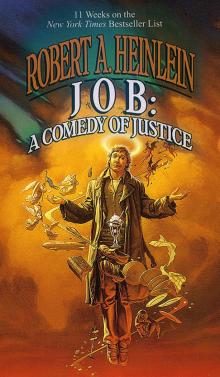 Job: A Comedy of Justice
Job: A Comedy of Justice Stranger in a Strange Land
Stranger in a Strange Land The Worlds Of Robert A Heinlein
The Worlds Of Robert A Heinlein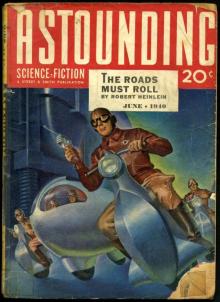 The Roads Must Roll
The Roads Must Roll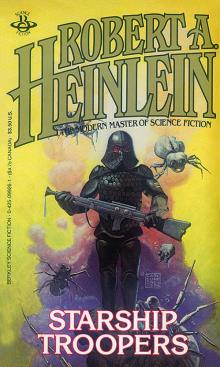 Starship Troopers
Starship Troopers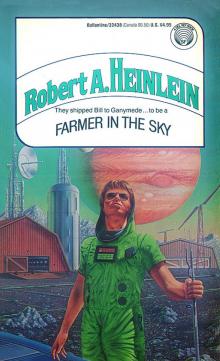 Farmer in the Sky
Farmer in the Sky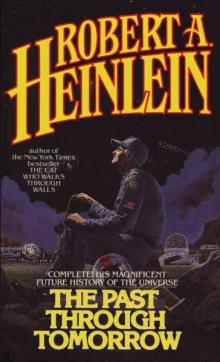 The Past Through Tomorrow
The Past Through Tomorrow The Door Into Summer
The Door Into Summer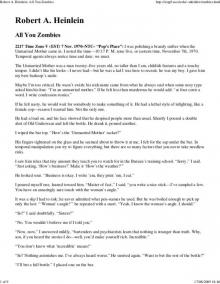 All You Zombies
All You Zombies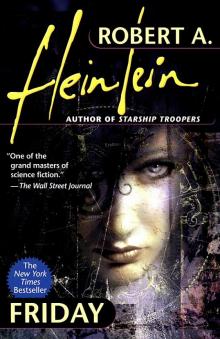 Friday
Friday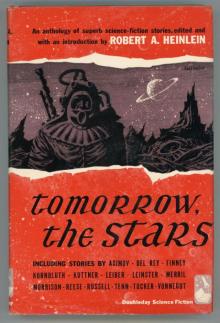 Tomorrow, the Stars
Tomorrow, the Stars The Notebooks of Lazarus Long
The Notebooks of Lazarus Long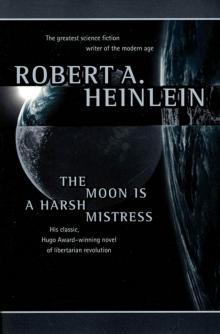 The Moon Is a Harsh Mistress
The Moon Is a Harsh Mistress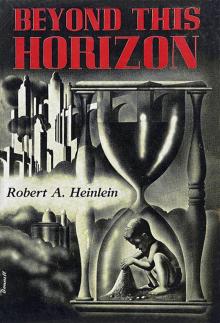 Beyond This Horizon
Beyond This Horizon Time Enough for Love
Time Enough for Love Tunnel in the Sky
Tunnel in the Sky Podkayne of Mars
Podkayne of Mars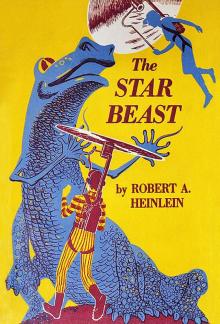 The Star Beast
The Star Beast The Cat Who Walks Through Walls
The Cat Who Walks Through Walls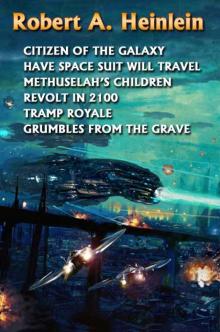 Grumbles From the Grave
Grumbles From the Grave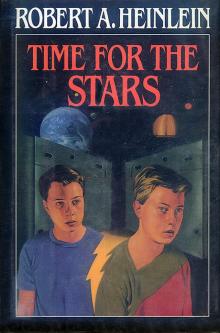 Time for the Stars
Time for the Stars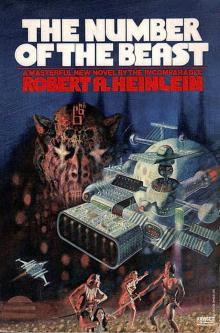 The Number of the Beast
The Number of the Beast The Unpleasant Profession of Jonathan Hoag
The Unpleasant Profession of Jonathan Hoag Sixth Column
Sixth Column To Sail Beyond the Sunset
To Sail Beyond the Sunset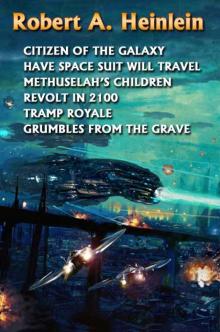 Revolt in 2100
Revolt in 2100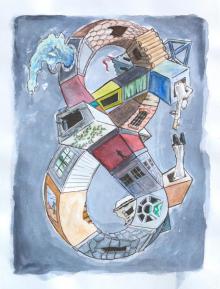 And He Built a Crooked House
And He Built a Crooked House The Pursuit of the Pankera: A Parallel Novel About Parallel Universes
The Pursuit of the Pankera: A Parallel Novel About Parallel Universes Expanded Universe
Expanded Universe Starman Jones
Starman Jones Red Planet
Red Planet Double Star
Double Star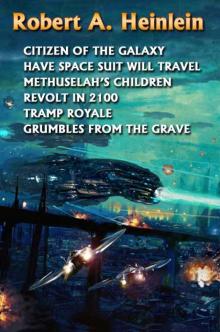 Citizen of the Galaxy
Citizen of the Galaxy Rocket Ship Galileo
Rocket Ship Galileo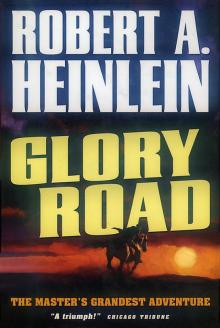 Glory Road
Glory Road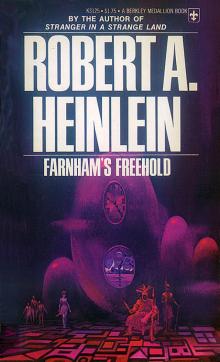 Farnham's Freehold
Farnham's Freehold Space Cadet
Space Cadet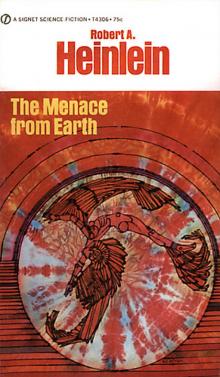 The Menace From Earth ssc
The Menace From Earth ssc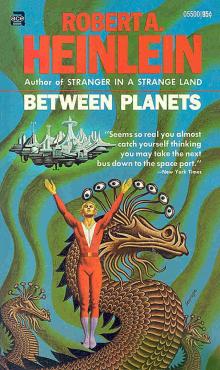 Between Planets
Between Planets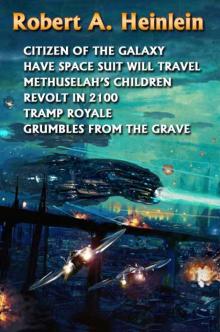 Methuselah's Children
Methuselah's Children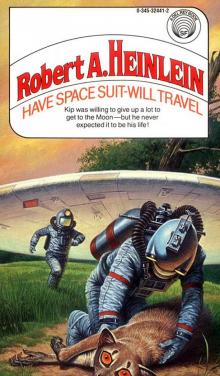 Have Space Suit—Will Travel
Have Space Suit—Will Travel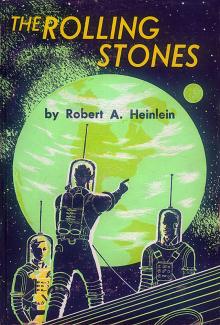 The Rolling Stones
The Rolling Stones Door Into Summer
Door Into Summer The Cat Who Walked Through Walls
The Cat Who Walked Through Walls Magic, Inc
Magic, Inc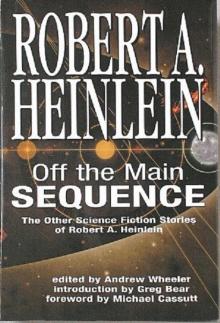 Off The Main Sequence
Off The Main Sequence Pied Piper
Pied Piper The Unpleasant Profession Of Jonathan Hoag And Other Stories
The Unpleasant Profession Of Jonathan Hoag And Other Stories Variable Star
Variable Star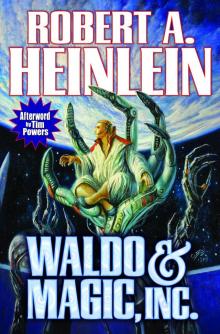 Waldo, and Magic, Inc
Waldo, and Magic, Inc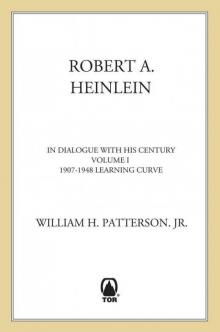 Robert A. Heinlein: In Dialogue With His Century
Robert A. Heinlein: In Dialogue With His Century Waldo
Waldo Bulletin Board
Bulletin Board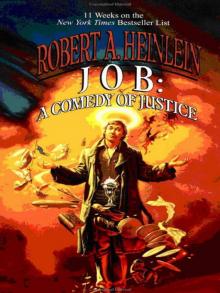 Job: A Comedy
Job: A Comedy Tramp Royale
Tramp Royale A Tenderfoot in Space
A Tenderfoot in Space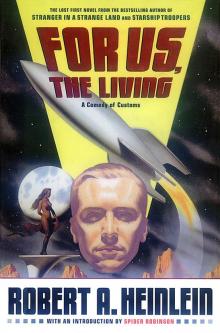 For Us, the Living
For Us, the Living Destination Moon
Destination Moon Logic of Empire
Logic of Empire The Fantasies of Robert A. Heinlein
The Fantasies of Robert A. Heinlein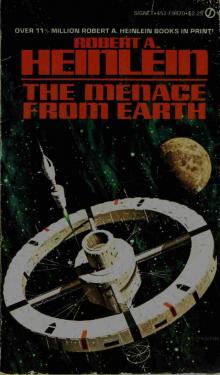 The Menace From Earth
The Menace From Earth From the Notebooks Of Lazarus Long
From the Notebooks Of Lazarus Long Have Space Suit - Will Travel
Have Space Suit - Will Travel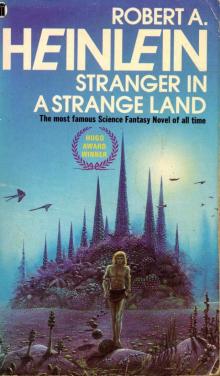 A Stranger in a Strange Land
A Stranger in a Strange Land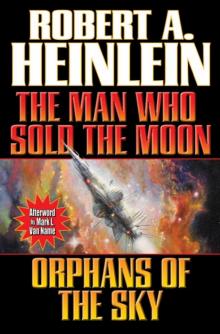 Man Who Sold the Moon / Orphans of the Sky
Man Who Sold the Moon / Orphans of the Sky